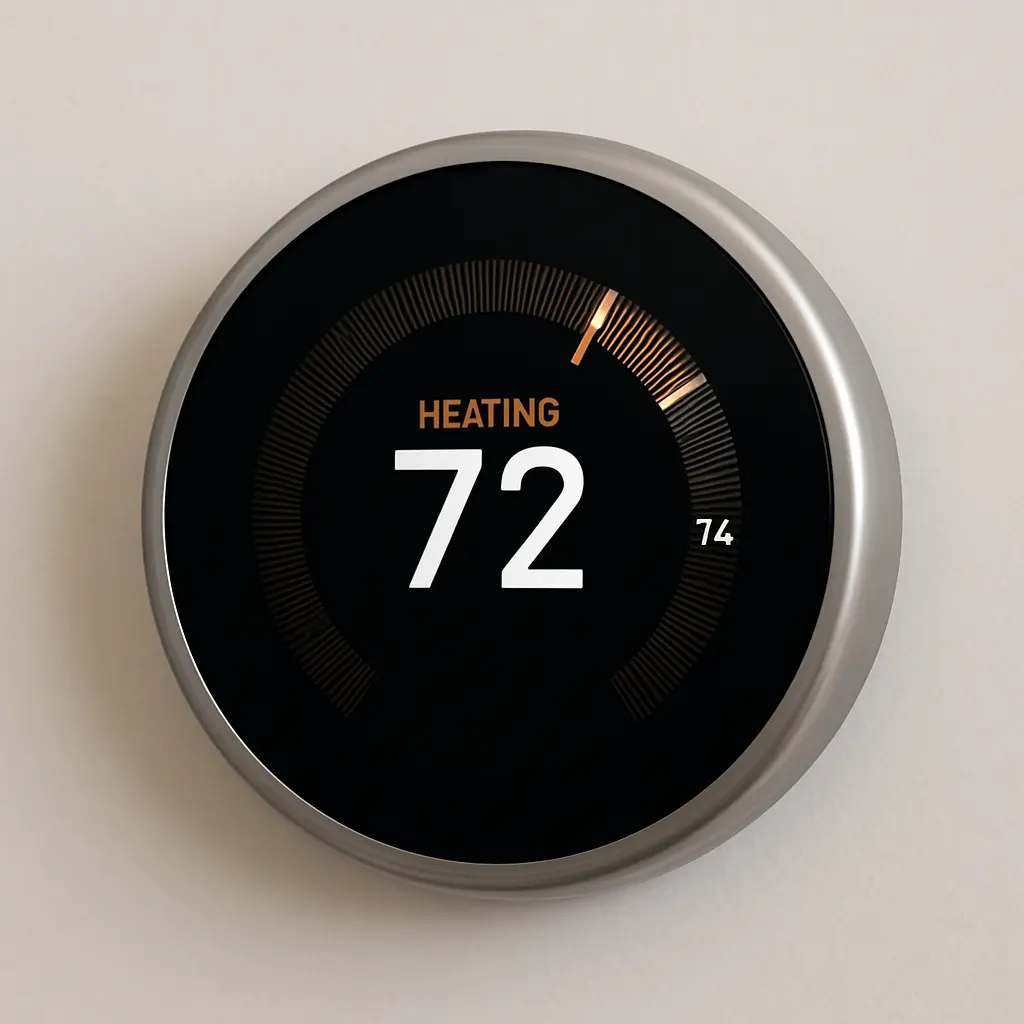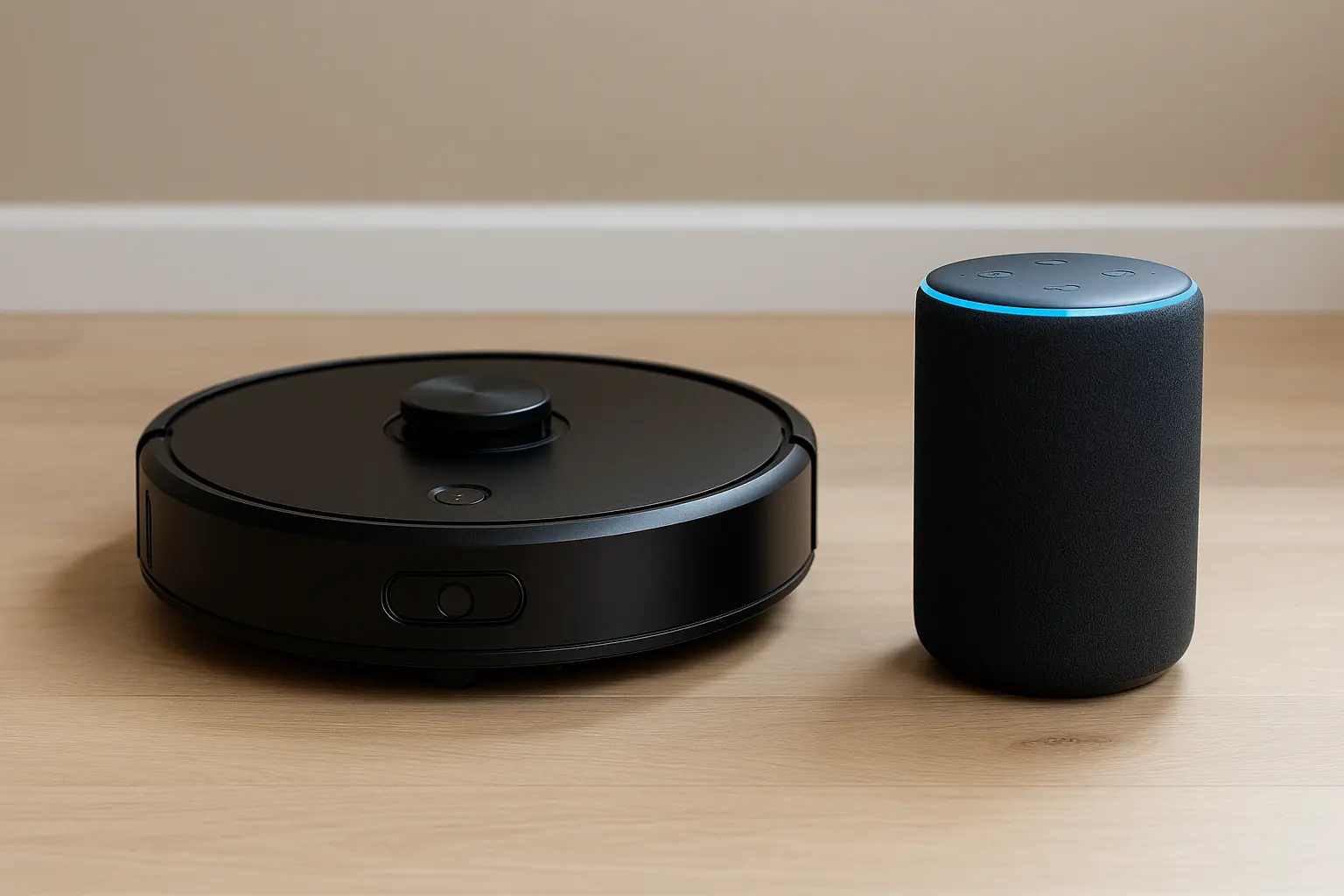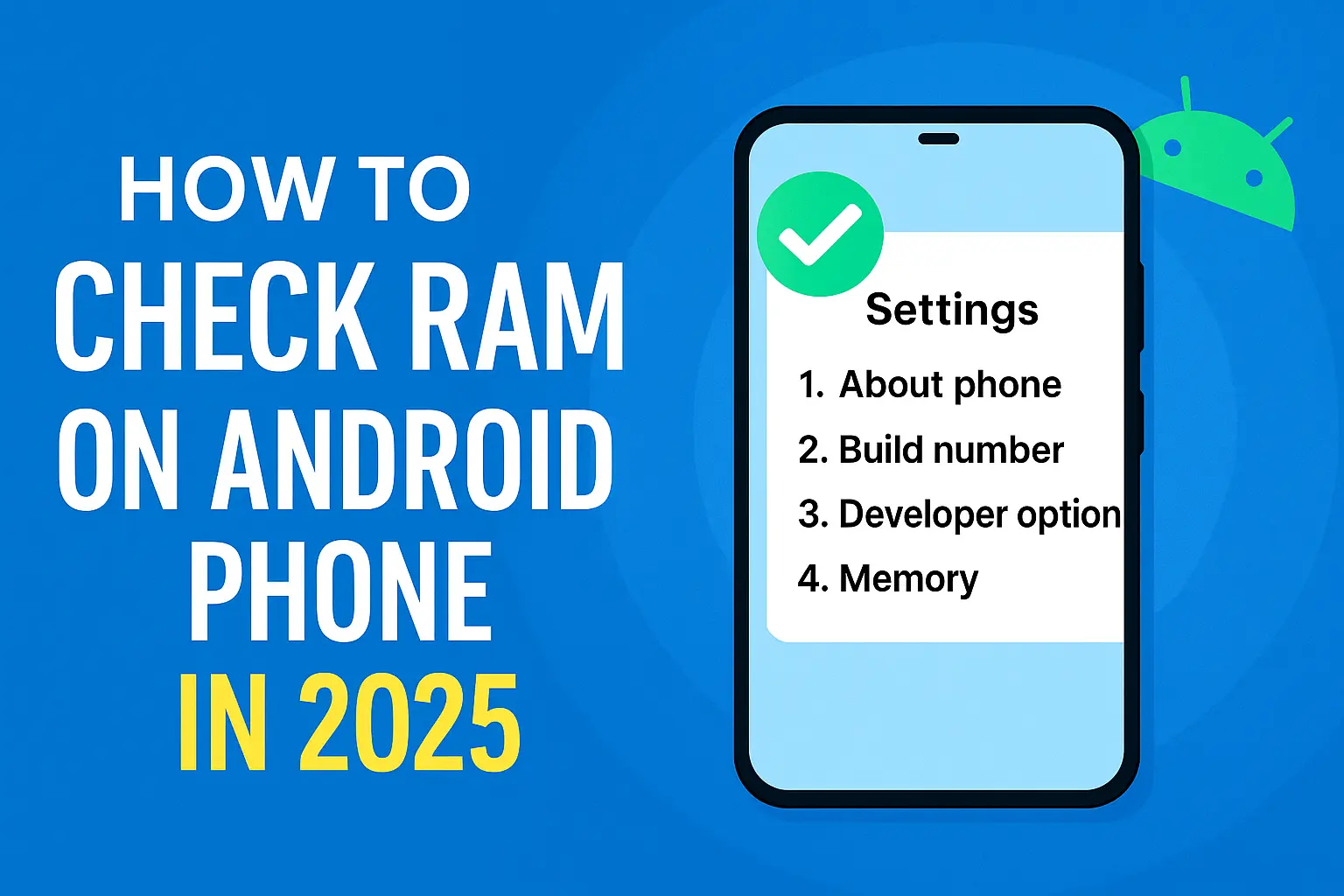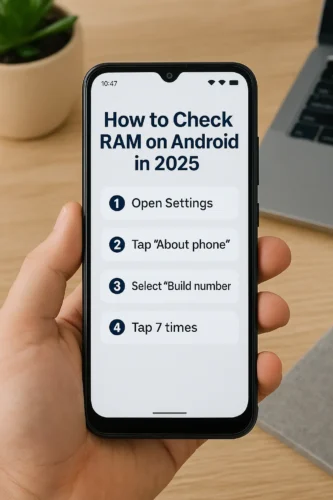How to Check RAM on Your Android Phone in 2025 – Quick & Easy Steps
Is your Android phone feeling a bit slow lately? Or maybe you’re just curious how much memory your phone actually has? Either way, learning how to check RAM on your Android phone can help you better understand what’s going on behind the scenes—and whether your phone is keeping up with your needs in 2025.
RAM (Random Access Memory) is a key component that affects your phone’s speed and ability to multitask. If your device is lagging while switching between apps or running games, checking your RAM usage on Android might give you some answers.
Thankfully, checking your phone’s RAM is super easy, and you don’t need to root your phone or install sketchy apps. In fact, there are a few ways to do it—whether you prefer to use built-in settings, explore Android’s Developer Options, or use a reliable RAM check app from the Play Store.
In this guide, we’ll walk you through exactly how to find RAM in your phone settings, how to monitor usage, and even how to tell which apps are hogging your memory. Whether you’re using a Samsung, Pixel, Xiaomi, or any Android device, these steps will help you take control of your phone’s performance.
Let’s dive into the quick and safe ways to check your RAM in 2025.
Contents
🔧 What is RAM and Why Does It Matter?
RAM (Random Access Memory) is your phone’s short-term memory. It temporarily stores active apps, system processes, and cached data so your phone runs smoothly. The more RAM you have, the more apps you can run simultaneously without lags.
✅ Pro Tip: Android phones in 2025 typically come with 6GB to 16GB RAM. Budget phones still offer 4GB, while high-end flagships push 12GB or more.
📲 3 Easy Ways to Check RAM on Android in 2025
1. ✅ Via Developer Options (No App Needed)
This is the most reliable native method.
Steps:
Go to Settings > About phone
Tap Build number 7 times to unlock Developer Options
Go back and open Settings > System > Developer options
Scroll to “Memory”
You’ll see:
Total RAM
Average RAM usage
Free RAM
App-by-app usage
📌 Note: This method works on most Android 10+ phones, including Samsung, OnePlus, Pixel, Xiaomi, and Motorola.
2. 📱 Using Built-In Phone Maintenance (Samsung, Xiaomi, etc.)
Some brands include built-in tools:
Samsung (One UI 6+):
Open Settings > Battery and device care > Memory
Xiaomi (MIUI 14+):
Go to Settings > About phone > All specs > RAM
You’ll see total and available RAM directly.
3. 📥 Using Third-Party Apps (If Needed)
Apps like these provide more advanced details:
| App | Description | Free |
|---|---|---|
| Device Info HW | Shows real-time RAM and CPU info | ✅ |
| CPU-Z | Lightweight, detailed spec app | ✅ |
| DevCheck | Live RAM and GPU usage | ✅ |
All available on the Google Play Store.
💡 Why Check RAM Regularly?
To see if your phone can handle gaming or multitasking
To determine if background apps are eating up memory
To optimize performance or upgrade (if supported)
🧠 FAQ – Frequently Asked Questions
Q1: Can I increase RAM on my Android phone?
➡️ Not physically, but some phones offer “RAM Plus” or virtual RAM features using internal storage.
Q2: Is it bad if my RAM is almost full?
➡️ Not always. Android manages RAM efficiently. But if your phone feels slow, clearing background apps can help.
Q3: How much RAM is enough in 2025?
➡️ For basic use: 4–6GB is fine. For gaming and multitasking: 8GB+ is ideal.
Q4: Why is RAM usage always high?
➡️ Android keeps apps cached for faster loading—it’s normal behavior unless you’re experiencing lag.
🔗 Related Articles
![Stream Without Limits – Best Wi-Fi 7 Routers for Buffer-Free Entertainment [2025] 1 Four modern Wi-Fi 7 routers displayed on a dark surface with a clean blue background, highlighting their sleek design and advanced antenna configurations.](https://www.techgadgetradar.com/wp-content/uploads/2025/06/best-wifi7-routers-streaming-2025-feature-image.webp)
![Fast, Cheap & Future-Proof – Best 5G Phones Under $400 [2025 Picks] 2 Four modern 5G smartphones under $400 in 2025 displayed on wooden table with vibrant screens](https://www.techgadgetradar.com/wp-content/uploads/2025/06/best-5g-phones-under-400-2025-feature.webp)



![Type Like a Pro – Best Mechanical Keyboards for Your Mac Setup [2025] 6 MacBook connected to a compact mechanical keyboard on a wooden desk](https://www.techgadgetradar.com/wp-content/uploads/2025/06/best-mechanical-keyboard-mac-setup-2025-feature.webp)

